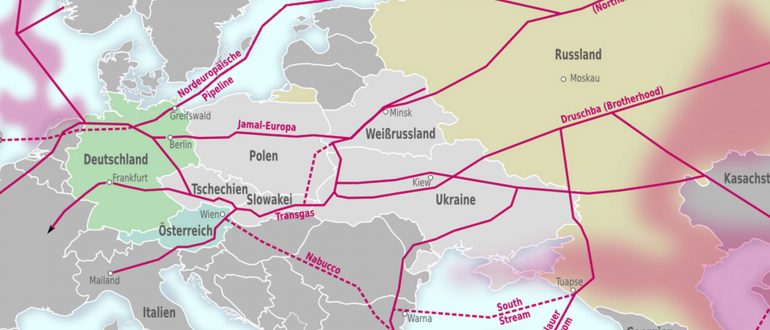
Nord Stream II – A Modern Energy Investment?
At the end of 2011, the friendship between former German Chancellor Gerhard Schröder and Prime Minister Vladimir Putin manifested itself in the 1224 kilometre-long Nord Stream I Pipeline, through which natural gas is imported from Russia to the EU. Five years later, Europe is discussing a twin project: Nord Stream II. If the investors Gazprom (50 per cent share), Uniper, OMV, Shell, Wintershall and ENGIE had their way, the project would have been launched yesterday; however, there is still a rocky political path to be travelled from the start of construction until the opening.
Like its twin, the new 1,200-kilometre-long pipeline will start at the Russian Baltic coast and connect to Greifswald region at the European grid. According to the latest estimates by investors, it will have an annual volume of 55 billion cubic metres and therefore be capable of supplying energy to 26 million households. Russian gas will fill the gaps in the European security of supply, which will result in a reduction in domestic gas production in Europe and an increase in demand for natural gas, according to company data.
Upon closer inspection, however, the estimates of the consortium for the demand and production of natural gas in Europe are questionable. A 2014 report from the Oxford Institute for Energy Studies and the forecast of the EU Commission on energy consumption until 2050 do not allow any conclusions to be drawn with regard to an increase in consumption in the EU. They even mention a decline in some scenarios through the reduction in energy intensity and the expansion of renewable energies. The Norwegian Ministry of Petroleum and Energy does not view the predicted decline in production as negatively as it is portrayed by the Nord Stream II consortium, focusing particularly on gas fields that will be developed in the future. Nevertheless, developments such as the decline in production of one of the biggest gas fields in the EU in Groningen, are cause for concern.
Even if the investors and the German federal government invariably present Nord Stream II as a commercial venture, the expansion of the pipeline system will definitely have consequences in terms of energy, environment and competition policy. Under the current market conditions, the old transport channels, made increasingly unattractive by the difficult relations between the Ukraine and Russia, cannot be completely replaced. But a future that does not include transit through the Ukraine is nevertheless foreseeable, especially if Kiev is not provided with any assistance for the reconstruction, and additional pipelines in southern Europe are completed. The Ukraine could lose out on several billion euros in transit income annually, while around 295 billion cubic metres will be available for the import of Russian gas, which is a far greater capacity than necessary.
EU commissioner Maroš Šefčovič sees another problem in how the goals of the energy union are being undermined, pointing out that even the exclusive economic zones of the member states in which the pipeline is to be constructed are not a legal vacuum. Šefčovič is referring specifically to the competition proceeding initiated by the Commission against Gazprom in 2012 for abuse of market power. In his view, it is questionable to what extent the EU would like to continue to abandon such market practices, and it underscores that European environment law absolutely cannot be circumvented.
Instead of continuing to expand the excess capacities of the Russian gas pipelines, diminishing the income of the eastern European countries, potentially hindering competition on the European single market and financing an antiquated energy system, European investors should invest in the CO2-free future with the possibility of 100 per cent security of supply through sun, wind and water. However, no private company that adheres to requirements can be prevented from sinking millions of euros into the Baltic.
This article is part of CISS’s cooperation with the Diplomatic Magazine and was published in August’s issue.
